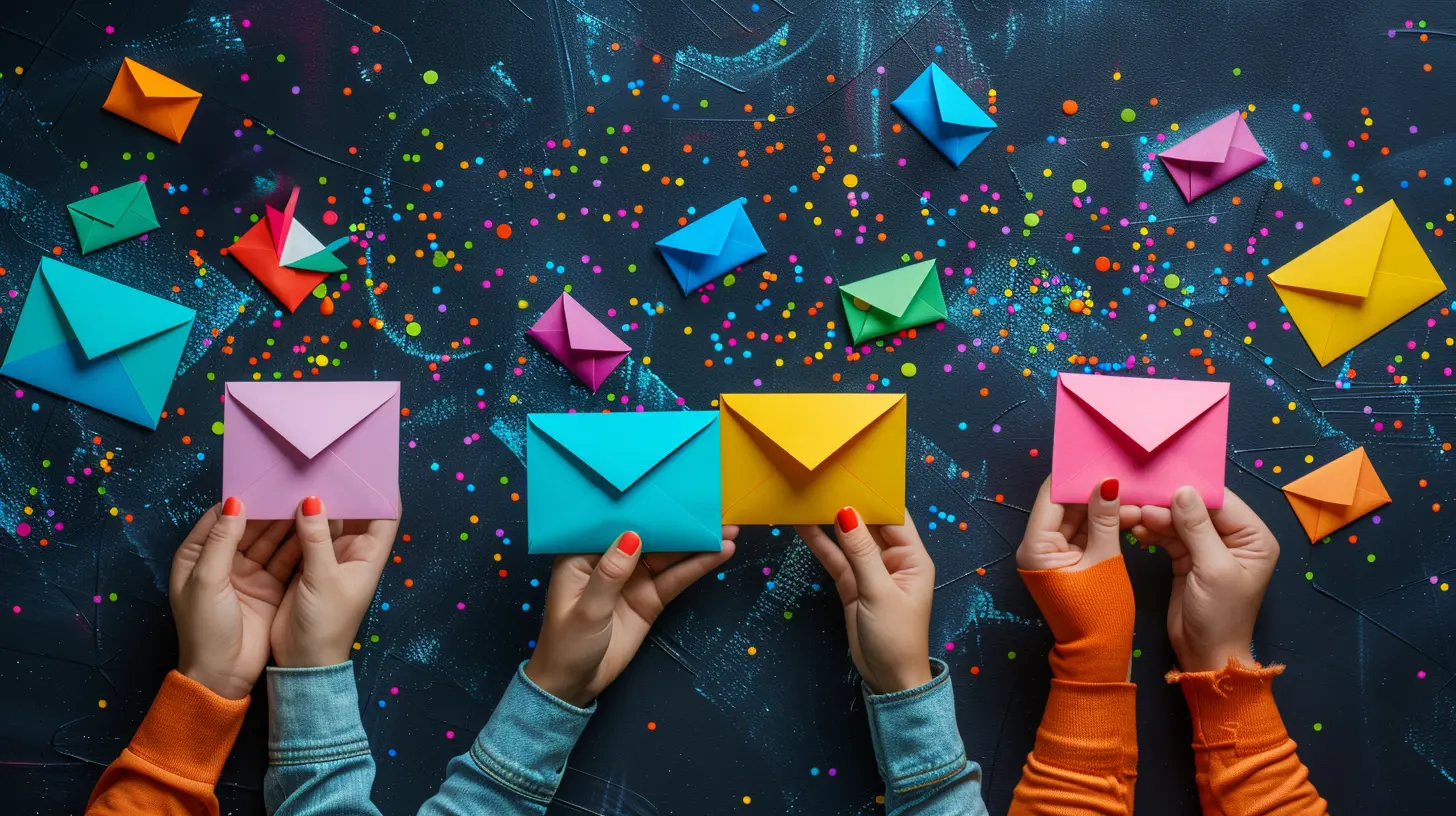Turning Cold Leads Into Hot Customers With Email Sequences
19 November 2025
If you're in business—any kind of business—then you’ve faced the ultimate marketing puzzle: how to take a cold lead and turn it into a sizzling hot customer. It’s like trying to turn a block of ice into a bonfire. Sounds dramatic? Maybe. But the truth is, this transformation is very real and very possible—if you’ve got the right email sequences in your marketing toolbox.
So grab a coffee, settle in, and let's unravel how email sequences can warm up your cold leads and bring them to the brink of buying. It’s about time we made your inbox your new favorite sales weapon.
What Are Cold Leads, Anyway?
Let’s clear this up before we dive deep.A cold lead is someone who might be interested in what you offer, but hasn't raised their hand yet. They probably signed up for your freebie, stumbled upon your website, or ended up on your list through a webinar. But they haven't bought anything. They're sitting on the fence. Maybe even napping on it.
Now, you could ignore them and wish them well. But what if you could warm them up, build trust, and eventually get them excited to buy from you?
That’s where the magic of email sequences comes in.
Why Email Sequences Work (Like, Really Work)
Email isn’t dead. In fact, it might be one of the most alive and kicking parts of your marketing strategy. Why?Because it’s personal. It slides right into your lead’s inbox, whispering (not shouting) your value. It feels less like a billboard and more like a gentle tap on the shoulder.
But here’s the deal—you can’t just send a random newsletter here and a one-off promo there. Nope. You need a system. A story. A journey. And that's exactly what email sequences provide.
They’re like breadcrumb trails leading your leads straight to the feast.
The Psychology Behind Warming Up Leads
Let’s nerd out for a second.Humans buy based on emotion, then justify with logic. Your cold lead isn’t going to whip out their wallet just because you said “Buy now.” They need to trust you. Like you. Feel like you get them.
Email sequences allow you to build that relationship over time. It's like dating. You don’t propose on the first date (yikes, right?). You build a connection, share some stories, maybe throw in a joke or two. And when the timing’s right—they say yes.
The Three Types of Email Sequences You Need
Let’s break it down. Not all email sequences are created equal, and you'll want to mix and match based on where your lead is in their journey.1. The Welcome Sequence (Cue the Confetti 🎉)
This is your first impression. Your digital handshake.What it does:
- Confirms their signup.
- Introduces your brand personality.
- Sets expectations.
- Starts building trust.
How to nail it:
- Keep it warm, friendly, and clear.
- Introduce yourself like a human, not a sales robot.
- Share what they can expect from your emails.
- Sprinkle in some of your best free resources or blog posts.
Example subject lines:
- "So glad you're here!"
- "Here’s what you can expect from us..."
- "Let’s get to know each other!"
Goal: Make them feel welcome and intrigued.
2. The Nurture Sequence (A.K.A. The Courting Phase 💌)
Now that your lead knows who you are, it’s time to build that emotional connection.What it does:
- Educates and informs.
- Provides value without asking for anything.
- Builds authority and trust.
How to nail it:
- Share case studies, testimonials, and useful blog posts.
- Address common pain points.
- Introduce your solution in a chilled, non-salesy way.
Think of this part as "show, don’t tell." Prove your worth without pushing them to pull out their credit card just yet.
Goal: Keep showing up and positioning yourself as the go-to expert.
3. The Conversion Sequence (Time to Shine 💳)
Okay, now we’re talkin’. This is where the sparks fly.What it does:
- Presents an irresistible offer.
- Handles objections.
- Creates urgency.
- Nudges the reader toward making a decision.
How to nail it:
- Lead with a strong story or pain point.
- Present your offer clearly.
- Use testimonials or social proof.
- Add urgency and scarcity (without being shady).
Example subject lines:
- "This is exactly what you’ve been looking for"
- "Only 2 days left until the doors close"
- "Real stories, real results—are you next?"
Goal: Get that “Yes, I’m in!” click.
How Many Emails Should Be in Each Sequence?
There’s no one-size-fits-all answer, but here's a solid starting point:- Welcome Sequence: 3-5 emails
- Nurture Sequence: 4-7 emails
- Conversion Sequence: 3-6 emails
It’s not just about numbers—it’s about pacing. Spread them out over a few days or weeks depending on your sales cycle. The key? Stay consistent and don’t go radio silent for months.
Tips to Make Your Email Sequences Unforgettable
Want your emails to actually get opened and read? Then you’ve got to add a bit of flair. Here’s how to stand out in that jam-packed inbox:1. Nail That Subject Line
This is your first impression. Make it punchy, curious, or emotional. Avoid spammy words like “Buy now!” or “Get rich quick.”🚫 “Exclusive deal inside”
✅ “What most people get wrong about [insert topic]”
2. Write Like You Talk
You’re not writing a college essay here. Be human. Use contractions. Throw in a GIF if it fits your brand. Use analogies your audience gets.Imagine writing to one person, not a crowd.
3. Include a CTA (Call to Action)
Always. Every email should have one clear next step—even if it’s just “hit reply and tell me what you think.”4. Segment Your List
Don’t lump all leads into one pot. Speak directly to their interests, behaviors, or opt-in paths.5. Track, Test, and Tweak
Monitor open rates, click rates, and conversions. Try A/B testing different subject lines or content formats. Your emails should evolve with your audience.Common Mistakes to Avoid
Let’s dodge the potholes, shall we?- Sending too many emails too fast – Nobody likes a stage-five clinger.
- Being overly sales-y – Nurture before you pitch.
- Writing long-winded essays – Get to the point, friend.
- Using vague CTAs – Be clear about what you want them to do next.
- Ignoring mobile optimization – Over 60% read emails on phones. Tiny fonts? Big turnoff.
Tools That Make Email Sequences Easier
You don’t need to be a tech wizard to create badass email sequences. These tools can help:- Mailchimp – Great for beginners and small businesses.
- ConvertKit – Perfect for creators and bloggers.
- ActiveCampaign – Super powerful automation.
- Klaviyo – Fabulous for e-commerce shops.
- HubSpot – Great for B2B and CRM features.
Most offer drag-and-drop builders and pre-made templates, so you can focus on crafting killer content, not coding.
Real-Life Example: How Sarah Turned 500 Cold Leads Into 30 Paying Clients
Sarah runs a small graphic design studio. She had 500 leads sitting in her email list, gathering dust. Instead of letting them go stale, she rolled out a 3-part strategy:1. Welcome Sequence – Reintroduced herself with a fun quiz and story about why she started her business.
2. Nurture Sequence – Sent weekly emails showing before-after design transformations, tips on branding, and case studies of happy clients.
3. Conversion Sequence – Launched a limited-time “Brand Glow-Up” package with an early bird discount.
Result? 30 clients signed up in just two weeks.
That’s the power of a warm, authentic, strategic email sequence.
Final Thoughts: It’s All About the Relationship
Turning cold leads into hot customers isn’t about trickery. It’s about building relationships. Email sequences let you nurture, educate, and finally convert—without sounding like a pushy salesman.Just remember:
- Be human.
- Be helpful.
- Be consistent.
When done right, email sequences don’t just generate revenue—they create raving fan customers who stick around for the long haul.
So, ready to melt the ice and spark some serious customer love?
Let the sequence begin!
all images in this post were generated using AI tools
Category:
Email MarketingAuthor:

Lily Pacheco
Discussion
rate this article
1 comments
Raven Martinez
Great insights! Effective email strategies matter!
November 19, 2025 at 4:40 AM


